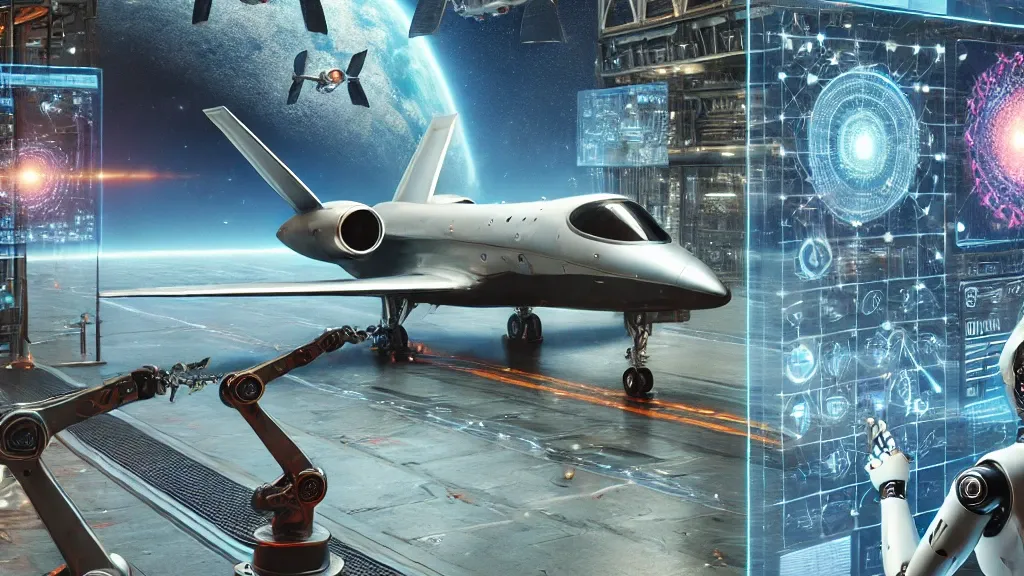The aerospace industry is on the brink of a revolutionary transformation, primarily due to AI-driven aerospace manufacturing. As technology continues to advance, the integration of artificial intelligence within aerospace manufacturing processes is becoming increasingly prevalent. This shift is not just about enhancing efficiency but also about redefining the very fabric of how aerospace components are designed, produced, and maintained.
At the heart of this transformation lies the ability of AI to process vast amounts of data and make informed decisions, a critical factor in an industry as complex and demanding as aerospace. In this article, we will delve into the various aspects of AI in aerospace manufacturing, exploring its impact, benefits, and future potential.

Understanding AI-Driven Aerospace Manufacturing
What is AI-Driven Manufacturing?
AI-driven manufacturing refers to the application of artificial intelligence technologies in the production and assembly of aerospace components. This involves the use of algorithms, machine learning, and robotics to automate and optimize various manufacturing processes.
The Role of AI in Aerospace
In the aerospace sector, AI is utilized to enhance precision, reduce errors, and improve overall efficiency. From designing aircraft components to monitoring production lines, AI plays a pivotal role in ensuring high-quality outcomes.
Key Benefits of AI in Aerospace Manufacturing
Improved Efficiency and Accuracy
One of the primary benefits of AI-driven aerospace manufacturing is its ability to improve efficiency and accuracy. With AI, manufacturers can automate repetitive tasks, reduce human error, and ensure that products meet stringent quality standards.
Cost Reduction
AI technologies can significantly reduce production costs by minimizing waste, optimizing resource utilization, and streamlining operations. This cost-effectiveness is crucial for an industry where margins can be tight.
Enhanced Design Capabilities
AI-driven tools allow designers to create more innovative and efficient designs. By simulating different scenarios and analyzing vast datasets, AI can help develop components that are lighter, stronger, and more aerodynamic.
The Impact of AI on the Aerospace Supply Chain
Streamlined Logistics
AI is transforming aerospace supply chains by optimizing logistics and inventory management. By predicting demand and identifying potential disruptions, AI helps ensure a smooth and efficient supply chain process.
Supplier Collaboration
AI facilitates better collaboration between aerospace manufacturers and their suppliers. By providing real-time data and insights, AI enables seamless communication and coordination across the supply chain.
Challenges and Considerations
Data Security Concerns
With the increased use of AI, data security has become a major concern. Manufacturers must ensure that sensitive information is protected against cyber threats and breaches.
Integration with Existing Systems
Integrating AI technologies with existing manufacturing systems can be challenging. It requires careful planning and investment to ensure a smooth transition and maximize the benefits of AI.
The Future of AI in Aerospace Manufacturing
Continuous Innovation
As AI technologies continue to evolve, we can expect further innovations in the aerospace industry. From enhanced materials to more efficient production methods, the future holds exciting possibilities.
Global Adoption
AI-driven aerospace manufacturing is set to become a global standard. As more countries and companies recognize its benefits, we can anticipate widespread adoption and further advancements in the field.
Conclusion
In conclusion, AI-driven aerospace manufacturing is reshaping the aerospace industry. Through improved efficiency, cost reduction, and enhanced design capabilities, AI is paving the way for a new era of innovation and excellence. As we look to the future, the integration of AI in aerospace manufacturing will undoubtedly continue to drive progress and set new standards in the industry.

FAQ Section
What is AI-driven aerospace manufacturing?
AI-driven aerospace manufacturing involves the use of artificial intelligence technologies to automate and optimize the production and assembly of aerospace components.
How does AI improve efficiency in aerospace manufacturing?
AI improves efficiency by automating repetitive tasks, reducing human error, and ensuring that products meet high-quality standards.
What are the challenges of integrating AI in aerospace manufacturing?
Challenges include data security concerns and the need for careful planning and investment to integrate AI technologies with existing systems.
For more insights on the role of AI in aerospace, you can visit ResearchGate.
Additionally, the AI in navigation is explored in detail at the Florida Space Authority.

